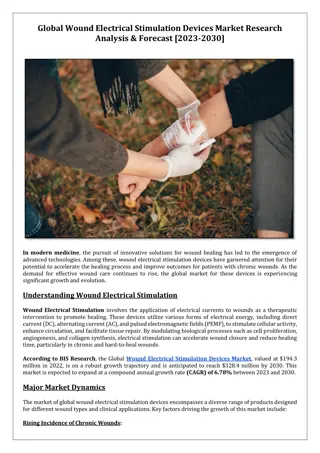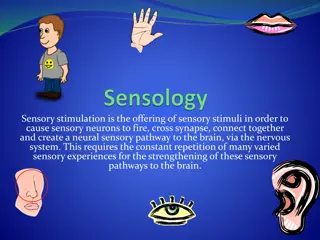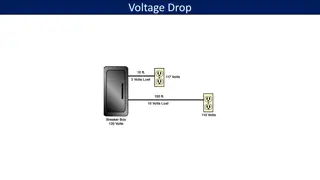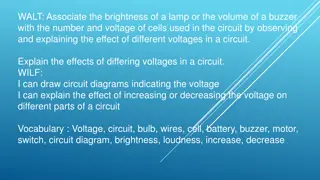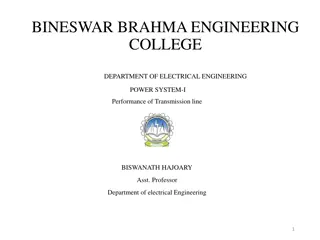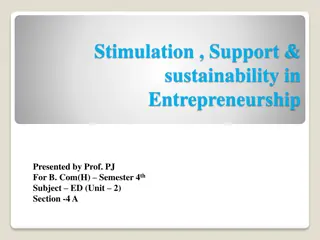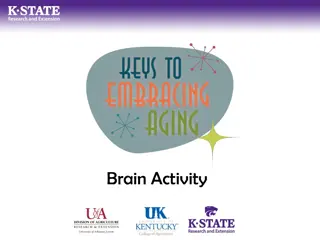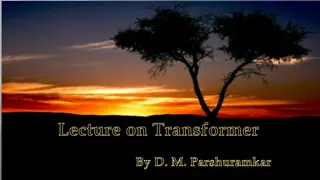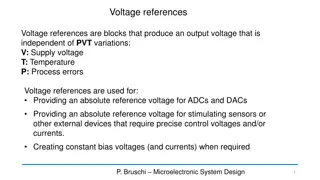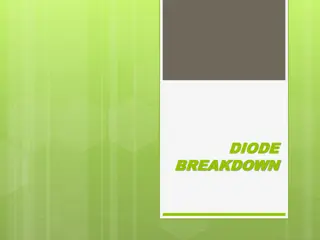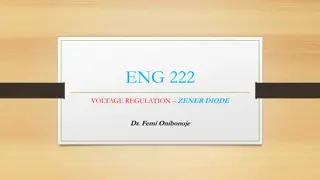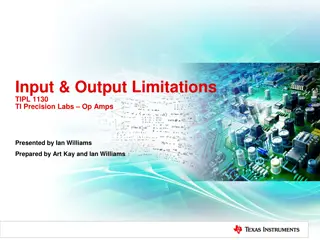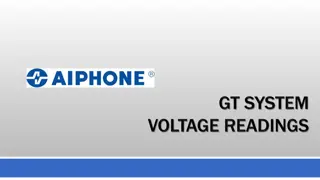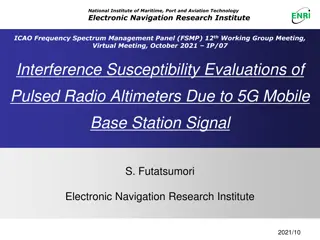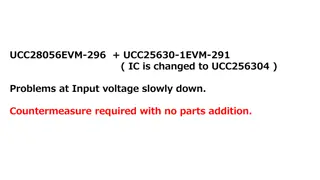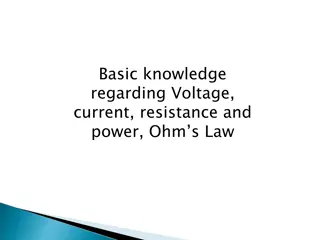Overview of High Voltage Pulsed Stimulation (HVPS) in Medical Applications
High Voltage Pulsed Stimulation (HVPS) is a versatile form of electrical stimulation used in various medical applications such as wound healing, muscle reduction, nerve stimulation, and pain control. Originally developed in 1945, HVPS delivers monophasic current with unique features like fixed duration in the microsecond range and voltage greater than 100V. Commercially available since the mid-1970s, HVPS generators produce twin peak, monophasic, pulsed current waveforms with modulation options like continuous, surged, or interrupted. The active circuit utilizes positive or negative polarity electrodes in different formations for optimal results.
Download Presentation

Please find below an Image/Link to download the presentation.
The content on the website is provided AS IS for your information and personal use only. It may not be sold, licensed, or shared on other websites without obtaining consent from the author.If you encounter any issues during the download, it is possible that the publisher has removed the file from their server.
You are allowed to download the files provided on this website for personal or commercial use, subject to the condition that they are used lawfully. All files are the property of their respective owners.
The content on the website is provided AS IS for your information and personal use only. It may not be sold, licensed, or shared on other websites without obtaining consent from the author.
E N D
Presentation Transcript
HVPS (High Voltage Pulsed Stimulation)
INTRODUCTION TO HVPS Recognised by various different names HVPG, HVS, DC MONOPHASIC, TWIN PEAK WAVEFORM Fixed duration in microsecond range (upto 200 s) Voltage should be greater than 100V.
HISTORY Originally developed in 1945 by Haslip in the USA and called 'Dyna-wave neuromuscular stimulation. Used for -acute sprains and strains. -Lower back pain. -Phantom limb pain The first published paper on use of this current was by Young in 1966, on edema reduction.
Commercially available in the mid1970s. Some authors include it in the Microcurrent group. Primarily used for wound healing. wound healing. Research by Watson and Kloth in 1988. In addition to wound healing, HVPS shows germicidal and antibacterial effects . Infected wound - active electrode should have negative polarity.
Unique Features of HVPS HVPS delivers Monophasic current so the polarity of each electrodes is known. It is versatile form of electrical stimulation. It is wide variety of uses {Muscle reduction, nerve stimulation, edema reduction, pain control}
HVPS GENERATOR PRODUCES Waveforms: Twin peak, monophasic, pulsed current waveforms. Paired unidirectional impulses that rise instantaneously and decay exponentially. The phase duration at the base of each member of a pair is 50 to 100microsec.
MODULATION- continuous, surged, or interrupted. AMPLITUDE- Up to500V. PULSE DURATION- 50-200 microsec. FREQUENCY- 1-125Hz. INTERPULSE INTERVAL- Large helping to decreases the overall amount of currents flows into the tissues. TWO ELECTRODES CIRCUITS- In order to conduct current to the patient.
THE ACTIVE CIRCUIT: It has positive or negative polarity electrodes in a 1,2or4 electrode formation. It is mainly used to stimulates the tissues. THE DISPERSIVE CIRCUIT: It is used to complete the circuit. So dispersive circuit polarity must have opposite to the active circuit. Dispersive electrodes size is usually larger than the active electrodes, where the density of current is reduced in order that the active circuit feels stronger .
METHODS OF APPLICATIONS OF ELECTRODES: HVPS Electrodes arrangement is different from TENS and IFT. HVPS must always use the dispersive electrodes in order to complete the circuit. Treatment Duration: Typical duration of HVPS is 15-30 min and the treatment may repeated as many time as day needed.
PARAMETERS PAIN RELIEF WOUND HEALING OEDEMA CONTROL
PAIN RELIEF Frequency: 80-120 Hz Pulse Duration: 100 sec Intensity: Comfortable buzzing Polarity: Place cathode (-ve) electrode on/ near the painful site. Treatment Duration: 20- 30 minutes, 3-5 days/ week.
Wound healing Frequency: 100 & 105 Hz Pulse Duration: 100 sec Intensity: Comfortable sensory stimulation, no muscle response. 150- 200 V. Polarity: Initial Stage: Treatment (-ve) electrode on/ near to the wound. Then anode (+ve) electrode in wound. Treatment Duration: 50- 60 minutes/ day, 3- 5 days/ week.
OEDEMA CONTROL Frequency: 120 Hz Pulse Duration: 5- 20 sec Intensity: Strong buzzing (90% visible muscle contraction). Polarity: Cathode (-ve) electrode surrounding the painful site. Treatment Duration: 30- 60 minutes, 3 times/ week.
Physiological Effects of HVPC Stimulation of Sensory Nerves STIMULATION OF MOTOR NERVES AcTIVATES SkIN BATTERy cELLULAR GALVANOTAxIS EFFEcT Improves local circulation and capillary density
1. Stimulation of Sensory Nerves -A and C fibers -A fibers A and C fibers are the pain carrying receptors. To stop the activation of these fibers we use electrical modalities. In electrical modalities we use to stimulate A Fibers as because they are fast conducting nerve fibers and used to stop the synapse of the pain carrying receptor.
2. STIMULATION OF MOTOR NERVES - A MOTOR FIBERS Alpha motor neurons are the lower motor neurons which takes part in the motor unit. Impulse used to travel by these fibers to excite the muscle. Due to which contraction occur.
3. Activates Skin Battery The epidermis maintains a skin battery that degenerates an endogenous electric field and current flow when wounded. Experimental models have demonstrated that most of the cell types within the wound can sense an electric field in the range of that endogenously generated wound. And, respond with a variety of biological and functional responses that can contribute to healing. Multiple animal wound models have demonstrated enhancement of a number of parameters of healing when ES is exogenously supplied.
4. Cellular GalvanotAxis Effect - Where polarized cells migrate towards the anode or cathode. Galvanotaxis- The passive impulse of Ca (2+) on the anodal side should increase the local intracellular Ca (2+) concentration whereas redistribution decreases the local intracellular Ca(2+) concentration on the cathodal side.
5. Improves local circulation and capillary density High voltage pulsed current cause vasodilation of the of the blood vessels due to which pain causing element get flushed out. Current also used to increase the velocity of the blood flow which used to increase the capillary density.
THERAPEUTIC EFFECTS OF HVPS
THERAPEUTIC EFFECTS :- WOUND HEALING MUSCLE STIMULATION REDUCTION OF OEDEMA
WOUND HEALING WOUND HEALING IS THE REPLACEMENT OF DESTROYED TISSUE BY THE LIVING HEALTY TISSUE. THIS CURRENT IS FOUND TO CAUSE HEALING OF WOUNDS. HVPS INDUCE FIBROBLAST TO INCREASE THEIR RATES OF PROTEIN SYNTHESIS & HENCE INDUCE HEALING. ACTIVE NEGATIVE- BACTERIA KILL ACTIVE POSITIVE- WOUND HEALING FREE FROM INFECTION.
MUSCLE STIMULATION THE CURRENT IS USED FOR THE STIMULATION OF INNERVATED MUSCLE, AS THE PULSES ARE VERY SHORT. HVPS IS USED FOR REDUCTION OF DISSUSE ATROPHY OF INNERVATED MUSCLE. FREQUENCY OF 30 HZ HAS BEEN USED.
REDUCTION OF OEDEMA THE RHYTHMICAL MUSCLE CONTRACTION & RELAXATION DUE TO HVPS ON MOTOR NERVE PRODUCE PUMPING EFFECT, INCREASE BLOOD FLOW IN MUSCLE & HELPS IN DRAINING OEDEMA.
INDICATION AND CONTRAINDICATION
INDICATIONS Accelerate wound healing Chronic wounds Reduce pain Reduce edema Muscle exercise to decrease atrophy or increase strength Range of motion Muscle reeducation Improve peripheral circulation Reduce muscle spasm
Chronic wound: A chronic wound is a wound that not heal in an orderly set of stage and in a predictable amount of time the way most wounds do; wound that do not heal within three months are often considered CHRONIC WOUNDS. Reduce edema: edema is the accumulation of tissue fluid in the extracellular space. Massage reduce edema by forcing the fluid into the drainage channels.
To reduce muscle atrophy: Its usually caused by lack of physical activity. When a disease or injury makes it difficult or impossible for you to move an arm or leg ,the lack of mobility can result in muscle wasting . Reduce muscle spasm & pain: spam is increase muscle tone in localise area. In muscle spasm there is a capillary contracture occurs which reduce blood flow. More spasm lead to more ischemic pain less flexible tissue.
Restoring range of motion: normal range of motion following injury is one of the primary goals in any rehabilitation program. Thus therapist must routinely include exercise to restore normal range of motion . Between 3-6 months, physical therapy increases in intensity. Exercise will help improve strength and ROM.
CONTRAINDICATIONS Do not use on patient with pacemaker. Do not use over- Heart or brain Abdominal are of pregnant women Anterior cervical area. Unconscious patient.


